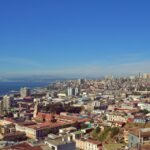Wondering when to go to Giza without running into huge crowds or bad weather? You're not alone! The ideal time to visit Giza really depends on various factors like weather, budget, local events, and what kind of experience you want. So let's break things down and help you pinpoint the best time for your trip to this iconic destination.
Overview of Giza’s Climate
The weather in Giza is typically dry and arid, characteristic of a desert climate. The best part? Giza doesn't experience much rainfall throughout the year. Summers are scorching, with temperatures often soaring above 100°F (38°C) in June, July, and August. Winters, on the other hand, are pleasantly mild, especially in December through February, when temperatures can dip to around 50°F (10°C) at night.
If you're planning to embrace the wonders of Giza, it's essential to consider the seasons in Giza. The ideal months are generally between October and April, when temperatures are more manageable for outdoor activities and exploring the pyramids.
Month-by-Month or Seasonal Breakdown
January – March (Winter)
Weather: Mild and comfortable, perfect for excursions. Average temperatures range from 50°F (10°C) at night to about 70°F (21°C) during the day.
Events: January heralds the Cairo International Book Fair, and by March, you can catch some local festivals celebrating Egyptian culture.
Pros: Great for outdoor sightseeing; the pyramids and the Sphinx won't be overwhelmed with tourists.
Cons: Nights can get chilly, so packing a light jacket is wise.
Best For: History buffs, solo travelers, and romantics enjoying the cooler weather.
April – June (Spring)
Weather: Temperatures start to rise as spring transitions into a hot summer. Expect daytime highs to hover around 80-90°F (27-32°C).
Events: April is the time for Sham El-Nessim, a spring celebration. It's a unique experience to mingle with locals enjoying the holiday!
Pros: The landscapes are vibrant, and the weather is still bearable, making it perfect for outdoor photography.
Cons: Travel costs can surge with the spring festivities, so expect higher hotel prices.
Best For: Photographers looking to capture the beauty of Giza with blooming flowers and clear skies.
July – September (Summer)
Weather: Hot, hot, hot! Expect temperatures frequently hitting 100°F (38°C) and sometimes even more.
Events: There's not much happening in terms of festivals, as most locals stay indoors to avoid the heat.
Pros: If you don't mind the heat, hotels often offer discounted rates during these months.
Cons: Crowds are sparse, but outdoor excursions can be uncomfortable if you're not accustomed to the heat.
Best For: Budget travelers who can handle high temperatures for lower accommodation costs.
October – December (Autumn)
Weather: Cooler temperatures return, making this one of the most comfortable times to explore Giza, with highs around 75-85°F (24-29°C).
Events: Cairo's culture returns to life, with many festivals leading into the holiday season, including the Cairo International Film Festival in November.
Pros: Great weather and vibrant local life make it ideal for sightseeing and cultural experiences.
Cons: As it gets closer to December, expect more crowds due to tourist influx.
Best For: Couples and families looking for an enjoyable weather experience.
Tips Based on Travel Style
-
For Budget Travel: Visiting Giza in the summer months (July to September) can save you some cash, with significantly lower hotel rates. Just be prepared for the heat!
-
For Avoiding Crowds: The best time to escape the hustle and bustle is during the peak summer months. The crowds are thin, which can make your time at key attractions feel more intimate.
-
For Outdoor Activities or Cultural Events: Spring (April to June) is ideal, not only for the weather but also for the vibrancy of local culture. You can get your fill of both ancient history and contemporary festivities.
- For Romantic or Solo Trips: The winter months (January to March) offer remarkable opportunities for a peaceful exploration of Giza's stunning sights. Picture a sunset at the pyramids with fewer people around—pure bliss!
It really depends on what kind of experience you're looking for. Some travelers love the quiet vibe of January or February, while others aim for the festivals in April or November.
FAQ
Is January a good time to visit Giza?
Absolutely! The weather is mild, making it perfect for outdoor sightseeing. Just bring a light jacket for the cooler evenings.
When is the rainy season in Giza?
Rainfall is rare, but if you're looking for the most humid months, that would typically be during the summer (July to August).
What's the cheapest time to visit Giza?
Summer (July to September) generally offers the most affordable accommodations, perfect for budget travelers, although you will have to deal with the intense heat.
What's the peak season in Giza?
The peak tourist season is from October to April, when the weather is more pleasant, but it's also when you'll see the most crowds at popular sites.
So there you have it! Whether you're an adventure seeker, a culture enthusiast, or a budget traveler, Giza has something to offer you at nearly any time of year. Happy planning!








